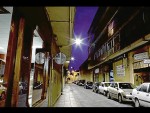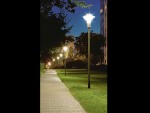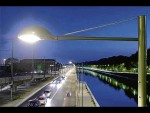Shedding off light for energy efficiency
Of the energy consumed worldwide, about a fifth (19 percent) comes from lighting alone, according to the International Energy Agency. In an office setting, some 35 percent of expenses come from light-related appliances.
These figures are indicative not only of the level of energy consumption attributed to inefficient lighting, but also of the interaction between people and their environment – depletion of natural resources, emissions that affect air quality and plant life, as well as disturbances in the natural rhythm of life brought about by light pollution.
The global discussion on energy efficient lighting has moved governments, including the Philippines, to craft legislation to limit energy consumption and carbon emissions, both of which are heavily impacted by lighting decisions.
Philips Electronics and Lighting Inc. participates in this discussion by taking the lead and spreading awareness and education on the need for energy efficient lighting solutions, beginning with Light Emitting Diodes, or more popularly known as LED.
The use of LED lighting solutions spells many benefits. For end users, it means lower costs and better quality of light. For the environment, it means lower emissions of unwanted substances. And for the economy, it brings about a more competitive lighting industry.
Article continues after this advertisement
According to Hasan Rehan, Philips senior program manager for outdoor lighting in the Asia Pacific Region, “13 percent of the world has already made the switch to LED, and we are expecting that more than half will realize the necessity to make the same switch by 2015.”
The switch to LEDs not only spells potential energy savings of up to 50 percent, in tandem with reduced energy costs and reduced greenhouse gas emissions, but also improved lighting quality and softened environmental impact.
“The flexibility of LED allows for different end-users to enjoy the experience of energy efficient lighting in different settings,” says Hugo Luik, Philips product marketing manager for LED Systems in the Asia Pacific Region. “LED lighting systems can be tailor-fit for outdoor, retail, hospitality, and office applications.”
The market for these LED lighting system is huge, Luik says. In Metro Manila alone, there are some 450,000 street lighting that can be replaced with the more energy efficient LED. A single hotel, he adds, has some 25,000 lighting points.
“The challenge is not necessarily the unwillingness to buy but the ability to do so especially for small businesses,” Luik says. “That’s why we’re talking to our potential customers and educating them about the benefits.”
A LED lighting system might be three to five times more expensive versus conventional lighting, he says, it delivers far more meaningful lighting. In the long run, the payback outweighs the absolute cost.
Luik says: “The LED is still in its infancy stage. Fifteen months ago, people were saying that LED is the future, now LED is here.”

